Here it goes, the blog post I have been writing/rewriting for weeks. Thanks to “peer influence” I will finally publish my ramblings. I am not a big “blogger” but finally hitting publish feels important because after 17 years of teaching I finally decided to take the plunge and put my efforts to something I have long wanted to do – I went “gradeless” in a school that requires term grades and in a community that values the “honor roll” as an achievement.
There is ample research to support the value of standards based grading and several other educators that have been advocating for the same shift. My decision to take this big leap was based on two main factors:
- As teachers we all have those statements/comments students make that irk us like no other. For me, it has always been, “is this graded?” I absolutely detest this question, but in a world in which students are told that getting an “A” is what matters most in their day, can I really blame them?
- I have long been frustrated by how easily some students achieve high scores, when their learning and thinking was not really challenged, while other students who were not as academically astute busted themselves to achieve strong scores, but in the graded system a “B” was often the best mark they would earn. I had always pushed back on students to continue to reach their full potential, but the score to me always seemed to reflect compliance and aptitude rather than effort and resiliency of each individual student.
At the start of the 2017-2018 school year I took the plunge. It was not easy! Scores were still required in our student information system and parents (and kids) were still set on achieving high honors, (sigh…), but I was determined to make it work. Here were the five main steps I took in my journey to make this shift.
Step 1: Alert my classroom community – The first step was sharing with my students and their families that I would be going gradeless. Although there were definitely skeptics, the response was quite positive. I made clear that the expectation for my class was dedicated effort to being the best learner they could be, and that students would learn to evaluate themselves on whether their work was WOW worthy. “Grades” would be achieved based on this dedicated effort.
Step 2: Break obsession with grades and refocus on learning – It took about 8 weeks to get kids to stop asking if “this was graded” for every activity they undertook in my classroom. My simple answer was always, “Just do your best work.” The key factor was asking them to assess that for themselves AND to let them know when I did or did not think something was their best work. There were no rubrics involved. There were assignment goals, directions I felt were necessary for the task to begin and then interaction. Students were not focusing on the “recipe” or the to-do checklist to get credit (aka, a rubric) – they were exploring and making choices in their own learning, often collaborating with peers to find success.
Step 3: Ongoing feedback as the norm – I can’t remember who said this but it is so true – once a student gets a grade they are DONE with that assignment. Not only does this create a waste of teacher time in giving feedback, it strips the feedback of any utility. I was determined to not waste anyone’s time and to instead give feedback when it would be most impactful. Circulating the room or calling students over to my table worked well and ignited powerful conversations with my students. I also leveraged the beauty of 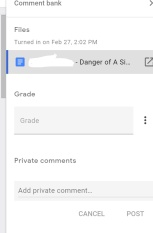 digital and opened work in progress to initiate conversation, share feedback and ask kids questions. “Do you think you could add more detail to this?”, “This is interesting, could you explain it to me a bit more?”, “Hmm, I am not sure that looks like a full answer,” or “I am impressed, keep up the great work!” all can have huge impact on learning WHEN the learning is happening. The simple truth is that by the time students handed in their work I already knew if they hit the mark, and had intervened if necessary. Also it was important for students to see assignments to completion – final grades were irrelevant.
digital and opened work in progress to initiate conversation, share feedback and ask kids questions. “Do you think you could add more detail to this?”, “This is interesting, could you explain it to me a bit more?”, “Hmm, I am not sure that looks like a full answer,” or “I am impressed, keep up the great work!” all can have huge impact on learning WHEN the learning is happening. The simple truth is that by the time students handed in their work I already knew if they hit the mark, and had intervened if necessary. Also it was important for students to see assignments to completion – final grades were irrelevant.
Step 4: Create systems for reflection and feedback – When assignments are submitted, students need to know that we spend time appreciating their efforts. In making this shift to gradeless I chose to focus on what I knew was most important to student learning – feedback that could influence their learning on the next assignment or learning experience. I had used Alice Keeler’s Pull Paragraph add-on last year and was sold on the benefits of quick digital feedback mechanisms. This year our district 1:1 program was extended to the 7th grade, which also meant my 7th graders now had gmail addresses. This was important because I knew that digital feedback would have even greater impact if I could share through email as well. Using Google Forms, I created a system that requires students to evaluate their own work in order to submit 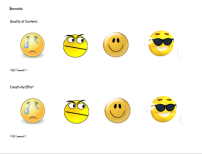 assignments. I then used Autocrat to take student feedback and my own feedback to create a dialogue about opportunities for improvement and observations of awesomeness. (Next year I plan to add to this to create a running record as opposed to doing it by assignment.) No longer looking for a grade, students started to really appreciate the comments and feedback. They also appreciated the emojis I used on many of my final feedback forms.
assignments. I then used Autocrat to take student feedback and my own feedback to create a dialogue about opportunities for improvement and observations of awesomeness. (Next year I plan to add to this to create a running record as opposed to doing it by assignment.) No longer looking for a grade, students started to really appreciate the comments and feedback. They also appreciated the emojis I used on many of my final feedback forms.
Step 5: Get students to “grade” themselves and buy-in – In March my students completed a summative assessment for our Africa Unit. Borrowing an idea from my friend, Jim D’Entremont, students were asked to create sketchnotes for each side of a cube to demonstrate their understanding of the different parts of the unit. By this point in the year, my “gradeless” system was well established. The “work hard and do your best and you shall be rewarded” system was churning in my classroom. A few days 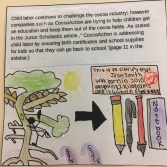 before the final project was due SEVERAL students came to me and asked for an extension. “Socko, looking back at my first few squares, they just aren’t good. I know what I was to do now to make them awesome, can I redo them?” I always say yes. When students realize they can be better and want to reach higher, why would I ever say no? And it was in this moment that I realized the system was working – students were focusing on their learning and their own thresholds of success.
before the final project was due SEVERAL students came to me and asked for an extension. “Socko, looking back at my first few squares, they just aren’t good. I know what I was to do now to make them awesome, can I redo them?” I always say yes. When students realize they can be better and want to reach higher, why would I ever say no? And it was in this moment that I realized the system was working – students were focusing on their learning and their own thresholds of success.
So the final question – what goes on the dreaded gradebook/report card? Unfortunately I have to put something there so I decided to enter the assignments and give points for completion. The larger assignments/tasks are given more points. If students complete the assignment to the level I believe they should be complete, and that has been discussed throughout the assignment, they earn the full points, if not, some points are deducted. The learning and growing are tied to the feedback, so it did not really matter what I put on the report card. Some may say that it is still grading, but I would disagree. These points reflect successful completion of learning missions, they are not a reflection of competence or aptitude. These scores are the necessary reality of trying to be focused on learning and engagement in an educational world that still values scores and data as the hallmark of student success. These scores keep the mamas and papas, and their little academics, who are still so focused on the coveted honor roll, happy.
As I ready myself for year two of a gradeless classroom I am excited to continue to develop models of assessment and feedback that foster rigor, collaboration and engagement. I am going to focus on student portfolios so that I can involve the families in the process of feedback and reflection. I am excited about the updates in Google Classroom that will make quick feedback to students even easier. I am excited to continue to learn new ways I can create the best learning environment for my students.
This is going to be a good year.


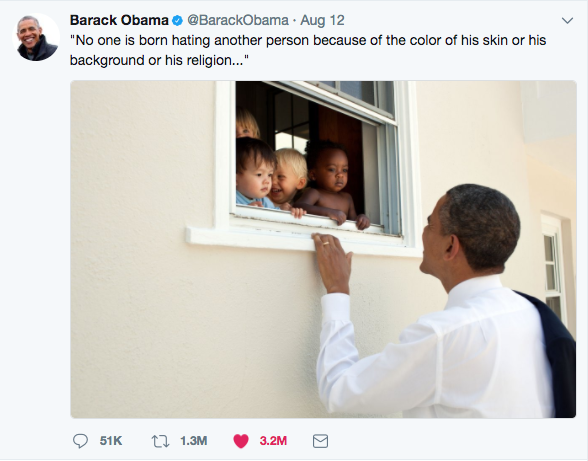
 sleep right now, I am confident that I will be a better teacher tomorrow thanks to the thoughtful and meaningful conversations I had with my fellow edcampers yesterday. But because my anal retentive personality about lesson prep will win out, and I do need to sleep, here is my quick run-down of my deep thoughts from Edcamp Boston 2016…
sleep right now, I am confident that I will be a better teacher tomorrow thanks to the thoughtful and meaningful conversations I had with my fellow edcampers yesterday. But because my anal retentive personality about lesson prep will win out, and I do need to sleep, here is my quick run-down of my deep thoughts from Edcamp Boston 2016…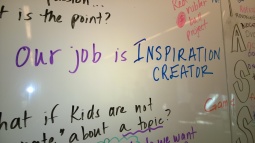 wall yesterday during our passion conversation, but it has been in the forefront of my mind today. Maker Spaces and genius hour and choice projects and the like, are all wonderful possibilities in the school day, but they are not always going to be the answer to the curriculum choices we are forced to make on a daily basis. Our job is to determine what is going
wall yesterday during our passion conversation, but it has been in the forefront of my mind today. Maker Spaces and genius hour and choice projects and the like, are all wonderful possibilities in the school day, but they are not always going to be the answer to the curriculum choices we are forced to make on a daily basis. Our job is to determine what is going 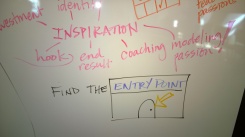 to inspire our students to learn whatever material we are tasked to teach. This is not
to inspire our students to learn whatever material we are tasked to teach. This is not losing in not being able to have these interactions with their peers? What are they losing on not having time to debrief and breathe during the school day? Sadly, I do not hold the power to make this change in my school or district, but I do have the power to create change in my own fifdom (aka Room 210). In Room 210 there are no “do nows” allowed. Students enter and breathe for a minute. It makes such a difference. Tomorrow when I do this, I will smile and think of my fellow passionites from Edcamp Boston, then I will set off on my mission to inspire.
losing in not being able to have these interactions with their peers? What are they losing on not having time to debrief and breathe during the school day? Sadly, I do not hold the power to make this change in my school or district, but I do have the power to create change in my own fifdom (aka Room 210). In Room 210 there are no “do nows” allowed. Students enter and breathe for a minute. It makes such a difference. Tomorrow when I do this, I will smile and think of my fellow passionites from Edcamp Boston, then I will set off on my mission to inspire.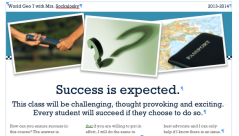
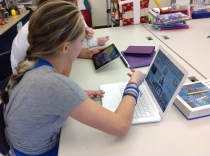

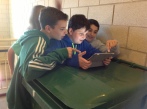
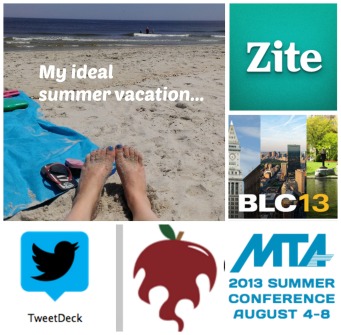 As the buses pulled away from the building on June 25th it is hard to determine who was more excited, me or the students that filled those busses. June was a long month! A year filled with transition to Common Core standards and a new teacher evaluation system was further complicated by crazy weather and a constantly disrupted calendar. When I left the building on June 28th after leading a three day workshop for teachers, I was exhausted. Fast-forward 10 days and I feel like a new person. I have had a wonderful week of vacation with my family, celebrated the 4th, read three books that have had zero value to my profession, or intellect for that matter, gotten some great sleep and have a pretty nice tan. Now I am ready to do what I love to do – dream about the possibilities of the new school year and figure out a way to make them a reality. To me, summer is my dedicated 20% time. It is my time to focus on what I want to dream about, not the initiatives of others.
As the buses pulled away from the building on June 25th it is hard to determine who was more excited, me or the students that filled those busses. June was a long month! A year filled with transition to Common Core standards and a new teacher evaluation system was further complicated by crazy weather and a constantly disrupted calendar. When I left the building on June 28th after leading a three day workshop for teachers, I was exhausted. Fast-forward 10 days and I feel like a new person. I have had a wonderful week of vacation with my family, celebrated the 4th, read three books that have had zero value to my profession, or intellect for that matter, gotten some great sleep and have a pretty nice tan. Now I am ready to do what I love to do – dream about the possibilities of the new school year and figure out a way to make them a reality. To me, summer is my dedicated 20% time. It is my time to focus on what I want to dream about, not the initiatives of others.